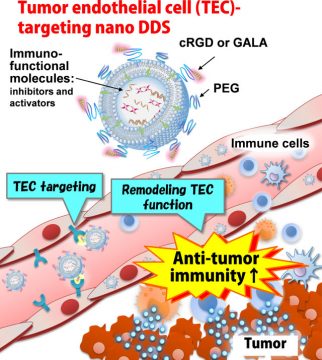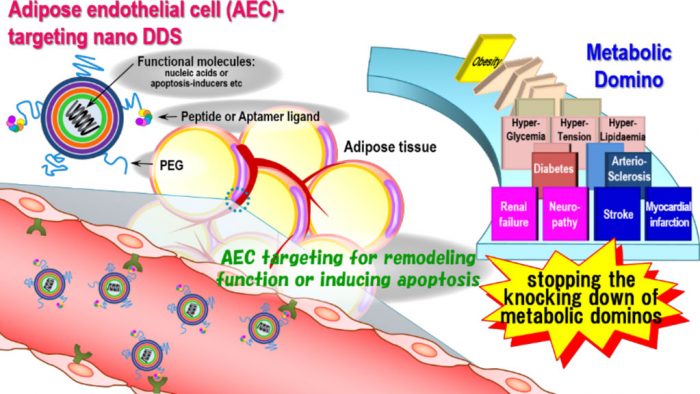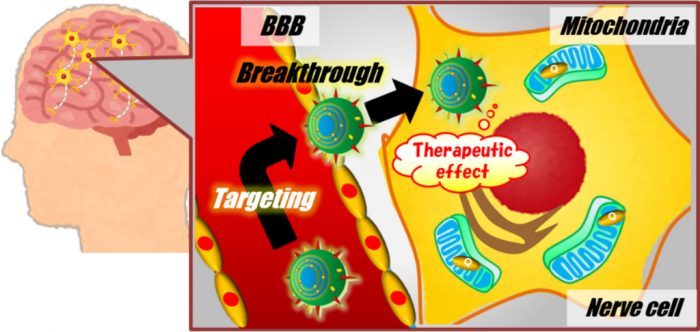-
Research subject
Pharmacy
General introduction to the research program in the Laboratory of Innovative Nanomedicines
The Laboratory of Innovative Nanomedicine was established in April 2009 to represent and contribute to the Joint Project at Hokkaido University “Vascular-targeted Innovative Drug Delivery System” supported by the Special Education and Research Expenses of the Ministry of Education, Culture, Sports, Science and Technology of Japan. Vascular-targeted DDS or active targeting is now the most focused technology in the field of DDS, because passive targeting based on the EPR-effect (enhanced permeability and retention effect) is not sufficient to maximize the targeting ability of DDS. In 2014, this Project was extended by “Clinical translation of the Vascular-targeted Innovative Drug Delivery System” for another 5 years and it has been very successful not only in terms innovative research but also in terms of encouraging young talent to be involved in this type of endeavor. The progress made from 2009 to 2018 is summarized below:
- Tumor group: This group was led by the Specially appointed assistant professor Hiroto Hatakeyama (now an Associate professor at Chiba university after a postdoctoral fellowship in the US) and a Dual-ligand system was developed to target the tumor vasculature. Dr. Sakurai succeeded him to lead the Tumor group and focused his efforts on the remodeling of tumor microenvironments by delivering siRNA to tumor vasculatures. The delivery of siRNA to the tumor vascular against biglycan is also ongoing in collaboration with the Laboratory of Vascular Biology. He also, in collaboration with Dr. Hyodo, succeeded in identifying a new aptamer ligand to tumor endothelial cells.
- Liver group: The specially appointed assistant professor Yasuhiro Hayashi, the leader of the Liver group, developed an active targeting system to liver endothelial cells. After leaving for the USA as a postdoctoral fellow, Dr. Yusuke Sato succeeded him as a specially appointed assistant professor. He designed a series of original pH-sensitive cationic lipids (YSK lipids) that have been applied to mice models of HCV and HBV in collaboration with Dr. Michinori Kohara, who has identified specific siRNAs that shut down the signal transduction of these viruses. Dr. Sato is now an assistant professor in the Laboratory for Molecular Design of Pharmaceutics and has constructed a new library of pH-sensitive cationic lipids to expand the structural diversity of YSK lipids. CL4H6 was identified as the most efficient one for silencing the FVII gene in mouse livers at a dosage of 0.0025 mg siRNA/kg, which is two times more efficient than that of the DLin-MC3-DMA of OnpattroTM.
- Adipose group: The specially appointed associate professor Kazuaki Kajimoto is the leader of this group and developed PTNP (Prohibitin-Targeted Nano Particles) to target adipose endothelial cells via a peptide ligand (KGGRAKD). He also screened new aptamer ligands to target adipose endothelial cells with a SELEX method in collaboration with Dr. Hyodo. Dr. Kajimoto was promoted to KAIST as a principal investigator and Dr. Ikramy Khalil followed him as a specially appointed assistant professor since 2016. He is now expanding active targeting systems to the lung with the GALA ligand in collaboration with Taiho Pharm. Co. Ltd and to the spleen with an R8/YSK double coated system, which is capable of inducing synergistic gene expression both in vitro and in vivo.
- Ligand group: Specially appointed professor Mamoru Hyodo, the leader of this group, has established a SELEX method for screening aptamer ligands to endothelial cells in tumor tissue as well as adipose tissue. He succeeded in identifying a new aptamer ligand for the tumor vasculature, which is a promising ligand for further applications. He has also screened new ligands for adipose tissue for aptamers, which show selective targeting ability to adipose vasculatures.
Development of cancer immunotherapy based on nano DDS targeting tumor blood vessels
 We developed the cRGD-MEND in which a MEND is modified with a cyclic RGD peptide that selectively binds to αVβ3 integrin, which is expressed in tumor blood vessels, and have succeeded in the remodeling the tumor microenvironment by incorporating siRNA that targets the vascular endothelial growth factor (VEGF) receptor into cRGD-MEND. In addition, we recently found that a MEND modified with the membrane fusion peptide GALA (GALA-MEND) was taken up by vascular endothelial cells in the lung in a highly efficient manner, and that a GALA-MEND loaded with siRNA targeting CD31 showed remarkable antitumor activity by inhibiting the angiogenesis of metastasis in a melanoma lung metastasis model.
We developed the cRGD-MEND in which a MEND is modified with a cyclic RGD peptide that selectively binds to αVβ3 integrin, which is expressed in tumor blood vessels, and have succeeded in the remodeling the tumor microenvironment by incorporating siRNA that targets the vascular endothelial growth factor (VEGF) receptor into cRGD-MEND. In addition, we recently found that a MEND modified with the membrane fusion peptide GALA (GALA-MEND) was taken up by vascular endothelial cells in the lung in a highly efficient manner, and that a GALA-MEND loaded with siRNA targeting CD31 showed remarkable antitumor activity by inhibiting the angiogenesis of metastasis in a melanoma lung metastasis model.
The success of immune checkpoint inhibition therapy as represented by the anti-programmed cell death 1 (PD-1) antibody has revolutionized cancer treatment, but the efficacy of anti-PD-1 therapy is currently limited. Thus, the development of cancer immunotherapy designed to overcome this resistance is an urgent objective. Tumor vascular endothelial cells are known to be involved in one of the mechanisms of anti-PD-1 therapy resistance. In this research, the goal is to develop practical applications for cancer immunotherapy by remodeling the tumor vascular of endothelial cells to overcome resistance to anti-PD-1 therapy based on cRGD-MEND and GALA-MEND technologies.
Realization of innovative nanomedicine for the metabolic syndrome
We developed prohibitin-targeted nanoparticles (PTNP) which specifically target adipose endothelial cells (AEC) through binding to prohibitin which is located on the surface of AECs. Treatment with a ppoptosis-inducible payload (PTNPs loaded with peptides or proteins) successfully induced apoptosis in AECs, resulting in an obvious anti-obesity effect. In addition, we succeeded in identifying some original aptamer-based ligands against AECs. We also succeeded in developing LNPs with world-class efficiency for the hepatic delivery of short interfering RNA (siRNA) and excellent safety through the construction of a library of original pH-sensitive cationic lipids which are keys to achieving efficient drug delivery.
The origin of the metabolic syndrome is from obesity and this increases the risk of developing fatal complications (including myocardial infarction and stroke) through increased risk factors such as hyperglycemia and hypertension. This process is known to as the “metabolic domino”. Because obesity is located at the top of the metabolic domino, the development of technology that can treat obesity is an urgent issue. This research aims to develop practical applications of innovative nanomedicine that are designed to overcome the metabolic syndrome through the induction of apoptosis or the functional remodeling of adipose and hepatic endothelial cells using the above-described original technologies.

Development of nano DDS that target the brain
In order to treat various diseases that are associated with brain dysfunctions such as cranial nerve diseases (Alzheimer’s disease, mitochondrial diseases, etc.) and brain tumors, an innovative nano DDS designed to permit therapeutic molecules to be distributed to the brain (step 1), be internalized into target cells (step 2), permit the regulation of intracellular trafficking to reach target organelles (step 3) are required. Even small molecules are resistant to passing through the Blood brain barrier (BBB) to the brain parenchyma via an intravenous injection route.
In this project, our goal is to to develop novel ligands that target the BBB as well as novel ligands that can penetrate the BBB using an original screening system (Step 1). In addition, we plan to develop new-types of Multifunctional Envelope-type Nano Devices (MENDs) for targeting brain neurons and brain tumor cells, which would lead to developing innovative nano DDSs that can be delivered to the brain (step 2). We plan to develop methods for targeting mitochondria, which have been reported to contribute to brain disease (step 3). A brain targeting mitochondrial nano-DDS developed in this research is expected to greatly contribute to the treatment and the elucidation of brain dysfunction disorders.




